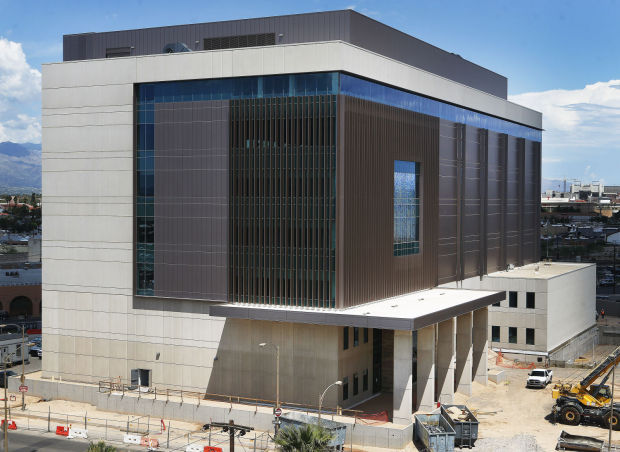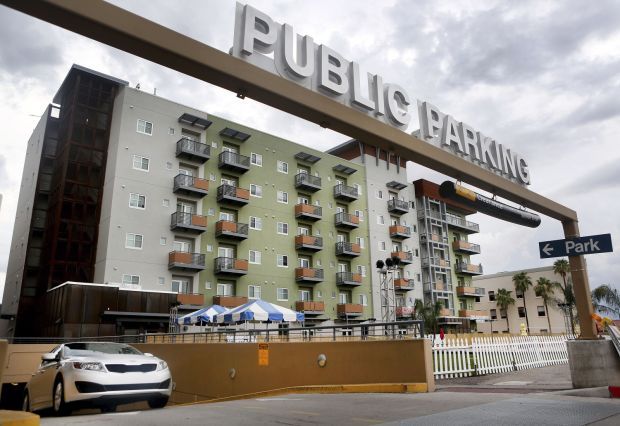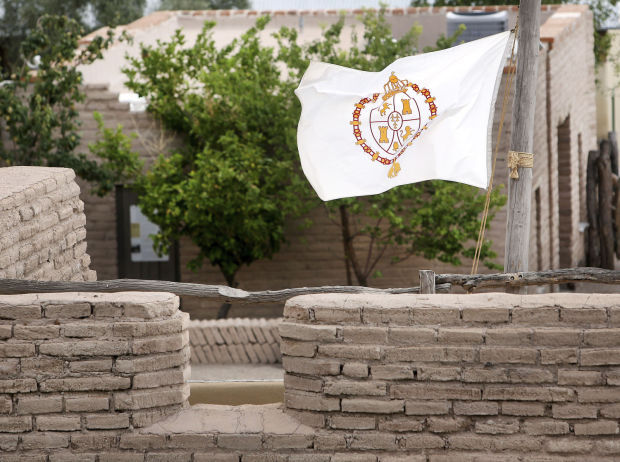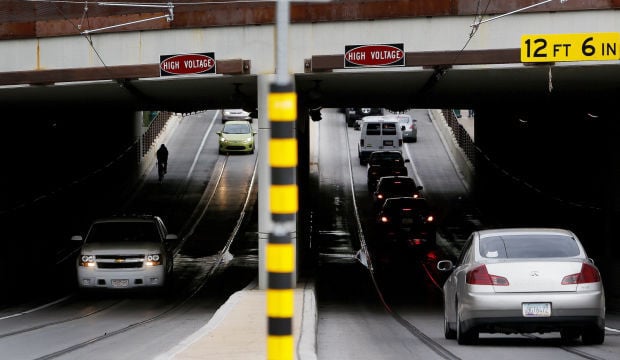While the arrival of streetcar service has seemingly given downtown a personality makeover, the long-term economic impact remains an open question.
City officials suggested the streetcar may have already contributed to $930 million in investment downtown — a figure Downtown Tucson Partnership CEO Michael Keith said probably overstates the streetcar’s influence, but clearly demonstrates an economic rebirth downtown.
“The economic impact of the Sun Link Tucson Streetcar continues to grow,” a July 31 city newsletter proclaimed.
“Even though the streetcar began passenger service less than a week ago, economic development along the 3.9-mile route has been heavy since voters approved the streetcar and RTA plan back in 2006,” the newsletter reported, citing $930 million in public and private investment along the streetcar route.
The figures are from a survey Keith started compiling in 2010 as a way to gauge how downtown was growing. They include $570 million in public investment and $360 million in private investment.
The public numbers comprise city, county and Rio Nuevo projects downtown since 2008, such as the $38.8 million Fire Department headquarters and $1.2 million in facade work on the old Walgreens building.
Keith said that while the streetcar has been a boon for downtown, it can’t be considered responsible for some of the projects since they predate it.
Many of the projects are part of the 1999 Rio Nuevo plan approved by voters, or were approved by the City Council well before the 2006 election that authorized funding and construction of the streetcar line.
Also, at $197 million, the streetcar itself makes up about 35 percent of the survey’s public investment portion.
Keith compiled the private investment by talking to new businesses that sprouted up around the downtown area since 2008.
Since the numbers are self-reported by individual businesses, they could be higher or lower, but they offer a ballpark figure of what the private sector has contributed to downtown, Keith said.
Keith’s survey includes the entire downtown area, not just along the streetcar route. The boundaries range from Sixth Avenue in the north to 18th Street in the south, and Grande Avenue in the west to Second Avenue in the east.
Some of the major pieces of public investment in downtown cited in the survey:
Project: County Courthouse
Cost: $98.5 million
Streetcar proximity: Roughly three blocks north of the streetcar stop at Stone Avenue and Congress Street.
Genesis: Approved as part of 2004 county bond.
While cursory studies on a new courthouse date to 1997, it wasn’t until voters approved a $76 million bond to fund a joint city-county complex that plans moved forward.
The courthouse will open in February 2015.
Project: Martin Luther King Apartments and Depot Plaza Garage
Cost: $39 million
Streetcar proximity: Adjacent to the route.
Genesis: Part of the city’s 2002 Martin Luther King Jr. Apartments redevelopment plan.
In 2002 the City Council first approved plans to renovate and expand the low-income apartment complex for the elderly and disabled, and add a parking garage and public plaza.
In 2004 the city applied for federal funds for the project, a portion of which was ultimately financed by Rio Nuevo.
Project: Fourth Avenue Underpass/Downtown Links
Cost: $43.3 million for underpass. $27 million for Downtown Links.
Streetcar proximity: Part of the route.
Genesis: Both are part of the city’s 1982 Barraza-Aviation Parkway Project plan.
The City Council approved funding for the parkway, which included plans to tear down the Fourth Avenue underpass, in 1982.
Opposition to tearing down the state’s oldest underpass and funding shortages stalled the underpass modifications for decades.
Originally projected to cost $16 million, myriad design changes, including one in 2006 to accommodate the streetcar, boosted the cost to over $43 million by the time it opened in 2009.
Downtown Links is the continuation of a decades-long effort to find a politically acceptable route to connect the current terminus of the parkway at East Broadway to Interstate 10, which is a requirement of the state funding used to build the road.
Project: Mission Garden/Origins Park
Cost: $23.6 million
Streetcar proximity: About six blocks southwest from the Linda Avenue and Cushing Street stop.
Genesis: Part of the Rio Nuevo plan approved by voters in 1999.
Even though it was part of Rio Nuevo, the project’s origins date to at least 1990, when then-Councilman Steve Leal pushed the idea to reinvigorate downtown and attract tourist dollars.
But it didn’t get moving until it was sold as a re-creation of Tucson’s birthplace as part of the 1999 Rio Nuevo package.
While it was billed as the signature piece of Rio Nuevo, the elaborate plans to build a two-story convento, Hohokam Village pithouses and the Carrillo House never materialized. Most of the money went to cleaning up the landfill, buying property and design work.
Project: Presidio Stabilization and Heritage Park
Cost: $4.4 million
Streetcar proximity: About five blocks northwest of the Church Avenue and Congress Street stop.
Genesis: Part of the Rio Nuevo plan approved by voters in 1999.
The Presidio Wall re-creation, which is at North Church Avenue and West Washington Street, opened in 2007.









